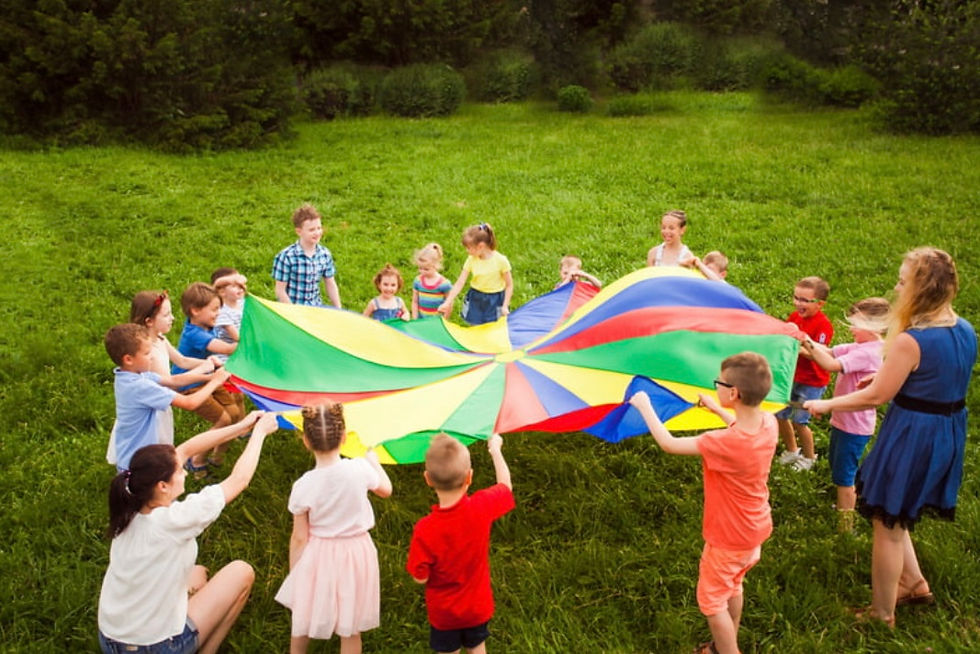Embracing the Great Outdoors: How Schools Can Incorporate More Outdoor Time
- trovephotographyco
- Mar 19, 2024
- 3 min read
Updated: Dec 19, 2024

In today's fast-paced world, children spend more time indoors than ever before, glued to screens and disconnected from nature. However, research shows that spending time outdoors offers numerous benefits for children's physical, mental, and emotional well-being. That's why many schools are exploring ways to incorporate more outdoor time into their curriculum. In this blog post, we'll explore some strategies for embracing the great outdoors and enhancing the educational experience for students.
1. Outdoor Classroom Spaces:
Imagine learning about ecosystems while sitting under a canopy of trees or discussing literature while feeling the gentle breeze. Outdoor classroom spaces provide a dynamic learning environment where students can engage with nature while learning academic concepts. By integrating benches, tables, and whiteboards into outdoor areas, schools can create inviting spaces for outdoor lessons and activities.

2. Nature Walks and Field Trips:
There's no better way to learn about the natural world than by experiencing it firsthand. Schools can organize regular nature walks and field trips to parks, nature reserves, and botanical gardens. These outings offer opportunities for hands-on exploration, observation, and discovery, enriching students' understanding of ecological concepts and fostering a deeper connection to the environment.
3. Garden Projects:
School gardens offer a wealth of learning opportunities, from teaching students about plant biology and nutrition to instilling a sense of responsibility and stewardship for the earth. By participating in planting, cultivating, and harvesting fruits, vegetables, and flowers, students gain practical skills while developing an appreciation for the natural world.

4. Outdoor Physical Education:
Why confine physical education classes to indoor gymnasiums when the great outdoors beckons? Outdoor physical education allows students to engage in activities such as running, yoga, team sports, and obstacle courses in the fresh air and sunshine. Not only does this promote physical fitness, but it also boosts mood and cognitive function.
5. Outdoor Recess and Breaks:
It's essential for children to have regular opportunities for unstructured play and physical activity throughout the day. Schools can increase the frequency and duration of outdoor recess and breaks, allowing students to recharge and rejuvenate in the great outdoors.

6. Science and Environmental Education:
Integrating outdoor learning experiences into science and environmental education curricula brings academic concepts to life. Students can conduct experiments, collect data, and study ecological principles firsthand, deepening their understanding of scientific concepts and fostering a sense of wonder and curiosity about the natural world.
7. Art and Creativity:
The outdoors provide endless inspiration for artistic expression and creativity. Schools can encourage activities such as nature sketching, plein air painting, outdoor sculpture, and photography, allowing students to connect with their surroundings in meaningful ways and express themselves through art.

8. Community Partnerships:
Collaborating with local parks, environmental organizations, and outdoor education centers can provide schools with access to resources, expertise, and programming that enhance outdoor learning experiences for students. These partnerships can enrich curriculum offerings, expand learning opportunities, and foster a sense of stewardship for the local environment.
9. Weather-Appropriate Clothing:
Ensuring that students have appropriate clothing and gear for outdoor activities in all types of weather is essential for maximizing outdoor learning opportunities. Raincoats, boots, sunscreen, and hats are just a few examples of items that can help students stay comfortable and safe while learning outdoors.

10. Curriculum Integration:
Integrating outdoor learning experiences seamlessly into existing curricula across subject areas is key to maximizing the benefits of outdoor education. By aligning outdoor activities with academic standards and learning objectives, schools can ensure that outdoor time is not only enjoyable but also educational and meaningful for students.
11. Teacher Training and Support:
Providing professional development opportunities and resources for teachers to incorporate outdoor learning into their lesson plans effectively is crucial. Offering guidance on best practices, safety protocols, and curriculum integration strategies can help teachers feel more confident and prepared to take learning outdoors.

12. Parent and Community Involvement:
Engaging parents and community members in supporting outdoor learning initiatives through volunteerism, fundraising, and advocacy efforts can strengthen the school's outdoor education program. By fostering a sense of shared responsibility and investment in outdoor learning, schools can create a more vibrant and sustainable outdoor education environment for students.
By embracing the great outdoors and incorporating more outdoor time into their curriculum, schools can provide students with a holistic and enriching educational experience that nurtures their physical, mental, and emotional well-being. From outdoor classrooms to nature walks to garden projects, the possibilities for outdoor learning are endless. Let's seize the opportunity to reconnect children with the natural world and inspire a lifelong love of learning.
So, what are you waiting for? Step outside and let the adventure begin!
Written by: Brianna VanValkenburg



Comments